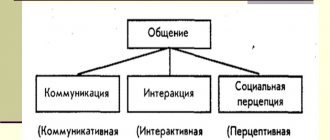One of the most important sources of knowledge of the world around us is its study with the help of the senses. The scientific name for this phenomenon is perception. It is known that the foundations of perception, that is, sensory perception, are laid in a person even while he is in the mother’s womb. With age, perception begins to play an increasingly important role in the worldview and the formation of a picture of the world.
Sensory perception of the world helps people correctly assess the situation
Formation mechanism
Mechanisms:
- Identification. Comparison of the subject with images that were perceived before. It is built on personal experience, which can be practical and theoretical.
- Stereotyping. The image, the idea of a person, his behavior, actions is built on stereotypes.
- Empathy. This mechanism is expressed in people who know how to worry about others, sympathize, and express sincere emotions regarding the problems of other people.
- Attraction. The mechanism of attracting people to each other. These are friendships or love relationships between individuals who communicate frequently with each other. Gradually they become attracted and begin to work together. The attraction consists of common interests, topics, and frequent meetings.
- Reflection. A mechanism of self-immersion to focus on one’s own interests, thoughts, behavior, and actions.
The mechanisms can manifest themselves singly or in complexes.
Methodology for the development of perception
According to the famous psychologist Dale Carnegie, sympathy can be aroused with a simple smile. Therefore, it is worth paying attention to your smile and learning to smile at passers-by and, in the future, at your interlocutors, in order to start a dialogue, and then create a strong and lasting communication connection.
A sincere smile evokes sympathy by default
Today there are many cunning techniques and psychological tricks in dialogue that will allow you to understand your interlocutor and enhance the transmission of your emotions.
You can also gesticulate more and develop facial expressions to make the conversation more lively and make it easier for the interlocutor to convey information.
This will improve the quality of social perception and understand people.
The practice of American psychologist, professor and specialist in the field of psychology of emotions and lie detection Paul Ekman is one of the most effective ways to obtain and develop social perception skills.
It is based on focusing attention in three areas of a person’s face: forehead, chin and nose. Paul Ekman believes that it is the nose, chin and forehead that reflect various emotional states of a person, for example, anger, fear, disgust, sadness.
By analyzing a person’s facial expressions and gestures during a dialogue, you can understand what mood the interlocutor is in and what he is feeling at the moment. The skill of recognizing emotions and gestures allows you to strengthen contact between people. This way you can know what is best to say during the dialogue.
Characteristics and properties
Indicators:
- tactful data absorption;
- determination of individual parameters;
- creating a sensory image of perception.
Properties:
- Constancy. The same perception of the distal object even if the proximal stimulus changes.
- Apperception. The content of the human psyche influences perception.
- Objectivity. Objects are a set of images that make up a specific object, and not a set of incoherent sensations.
- Meaningfulness. Any object is called mentally and is perceived consciously.
- Selectivity. From the variety of subjects, only one is selected.
Perception is closely related to memory, attention, thinking, and logic. Characteristics:
- materiality;
- apperception;
- structure;
- rationality;
- contextuality;
- awareness.
The essence of interpersonal perception
Interpersonal perception is a side of communication that includes the exchange of information and interaction, which is influenced by such factors: the subject’s activity, expectations, intentions, past experience, situation, and more.
Mechanisms of interpersonal perception
The perception of another person allows the personality to shape itself, because during this the relationship of the personality with the opponent occurs. To achieve the goal, long-term joint activity between them is necessary.
The development of self-awareness through the process of analyzing oneself through another is carried out through the following mechanisms:
- Reflections are rethinking your actions and feelings.
- Causal attribution is the concept of one’s mistakes through the achievements of another.
We are designed in such a way that the process of studying the world around us never ends. New items and technologies appear that need to be analyzed. We meet new people and form a certain opinion about them. The process of introspection and soul-searching continues throughout our lives. We are changing, the structure of the world is changing. All these aspects point to the importance of a correct understanding of everything that surrounds us.
I hope this article will be useful to you. If your boss doesn’t like you, then this depends only on the effect of hyper-demandingness, and not on the fact that you have no positive qualities.
Types and levels
Perception in psychology is most closely associated with perception. Perceptual actions are actions that are necessary for sensory knowledge of the world around us. They depend on perception. The world around us is learned through:
- touch;
- hearing;
- vision.
Visual perception is considered the most significant. There are few people in the world who have well-developed all types of perception. More often than not, one of the varieties predominates over the others.
Visual
People with heightened visual perception react sharply to visual stimuli, visual stimuli, and bright colors. More often they are interested in paintings and paintings. They differ from others with good visual memory. When they see another person's face, they remember it for a long time.
Auditory
People with heightened auditory perception have absolute pitch. They can reproduce any intonation. More often such individuals become musicians. The main disadvantage of heightened auditory perception is high sensitivity to loud or disharmonious sounds.
Tactile
Some individuals need to touch them to better remember objects. It can be said about such individuals that they have a heightened tactile perception. Scientists have been able to prove that it is most developed in early childhood. During this period, you need to work more with the child in developing fine motor skills.
Social
Social perception is the ability to perceive other people through the prism of stereotypes and social attitudes. They are not always adequate. A developed social perception is needed by a teacher, psychologist, and sociologist.
Definition of perception in psychology
The word “perception” comes from the Latin language, translated as “perception”. Perception is a reflection of the surrounding reality using images, pictures, colors.
Each person sees the world differently
In psychology, this allows you to find out how and what kind of person sees a situation.
Perception, as an important mental function of cognition, was known in antiquity as sensationalism.
Perception is a cognitive function of the human brain. With its help, a person’s perception of the world is formed.
Perception is the display and perception of an action, object, or human phenomenon.
This phenomenon occurs through the senses, which take part in the brain’s formation of a holistic image (object, action, phenomenon). The sensations caused by perception turn into analysis and the creation of a holistic image.
Psychologists have long found their interest in perception. Perception cannot be formed without specific sensations. Each person’s perception of the world is individual, but generally identical in basic parameters.
Laws and factors
Types of factors:
- external;
- internal.
Internal:
- Settings of personal perception. Human expectations often come down to assessing the future based on past identical situations.
- Stimulation. A person’s visual examination of objects that are important to him at a certain period.
- Personal experience. Allows you to perceive already studied objects.
- Self-perception. Each individual perceives himself differently. Takes into account the personal characteristics that make him unique.
- Character specifics. This is an individual specificity of perception, determined by the predominance of different character traits.
External factors - novelty, size, saturation, cyclicity, definability, discernibility, movement, opposition.
Aspects
Perception first appears at the stage of visual analysis of the communication object. Thus, physiognomy claims that there is a connection between an individual’s facial features and his psychological characteristics. Based on an assessment of the interlocutor’s appearance, the first assumptions are made regarding his inner world and behavior.
Then some emotional contact is formed. If the conversation has an unpleasant context, a negative perception of the opponent may well be formed. And vice versa.
In the process of communication, people observe their partner’s speech, facial expressions, gestures, and habits, receiving verbal and nonverbal information about his personality.
additional literature
- Andreev, V.I.
Conflictology: the art of dispute, negotiation and conflict resolution / V. I. Andreev. – Kazan: SKAM, 1992. – P. 81-139.
- Bern, E.
Games People Play. Psychology of human relationships. You said hello. What's next? Psychology of human destiny / E. Bern. - Ekaterinburg: LITURE, 2005. - P. 7-53.
- Vardanyan, Yu. V.
Psychology of communication: textbook. allowance / Yu. V. Vardanyan, T. V. Savinova. – Saransk, 2003. – P. 15-29.
- Cornelius, H.
Everyone can win / H. Cornelius, S. Fair. – M.: Stringer, 1992. – P. 8-210.
- Rudensky, E.V.
Fundamentals of psychotechnology of manager communication / E.V. Rudensky. - M.: INFRA-M; Novosibirsk: NGAEiU, 1997. - P. 40-43.
Perceptual component
This component of perception helps to correctly assess the appearance and behavior of the interlocutor. The information obtained allows us to study his character, motives, and reasons for his actions. Without the perceptual side of communication, it will not be possible to draw such conclusions. And even if they do, they will be superficial. You will see the “picture”, but you will not be able to understand its content.
The development of social perception is the opportunity to see what a person thinks, why he acted this way and not otherwise, what he is worried about and worried about. The main thing is not to rush. Give time for a reliable assessment to form.
Interestingly, the perceptual component helps to change the first impression, the prevailing opinion about a person. Imagine that you met an old acquaintance and immediately noticed how much he had changed. The perceptual side of communication in this case will help you change your mind and abandon the initial assessment. You will now consider your opponent based on his changes, how he is at the current moment in time.
Teachers
A teacher's perceptual abilities are the ability to:
- perceive the student’s psychological state;
- keep the whole class and a specific student in sight at the same time;
- differentiate the characteristic features of a student from the manifestation of a momentary state;
- evaluate students’ activities based on the results of completion (positive, negative, neutral), voicing a comprehensive analysis.
It should be noted that the requirements for the skills, abilities and competence of a teacher vary depending on the field of activity: school, college, university. Different researchers classify teacher competencies in different ways. The conclusion about the importance of a person’s pedagogical orientation in activity remains unchanged (at a high level of development of general and special abilities).
Larisa Maksimovna Mitina in her research highlights the reflexive-perceptual abilities of a teacher and their components:
- pedagogical reflection;
- pedagogical tact;
- pedagogical orientation.
All of the above skills are components of pedagogical culture. Its structure includes significant qualities:
- professional and personal;
- professional knowledge;
- professional skills;
- active pedagogical position;
- experience of creative activity.
The value of pedagogical culture is the child – his development, learning, protection and support of dignity. The developed perceptual abilities of a teacher are the foundation for joint directed activities of teacher and student within the framework of pedagogical culture.
First impression mistakes
Information enters the human consciousness from three sources:
- Visual perception, which forms a complex of visual images.
- An auditory source formed by a combination of sounds.
- The kinesthetic channel of management perception, built on sensations.
Important! Individual subjects of society are able to perceive and process data, focusing on three data sources. However, one channel is a priority; on its basis, the main perception, formation of thoughts, memories occurs
Modality (qualitative characteristics of sensations) in people (visual, auditory and kinesthetic, respectively) is formed individually.
Inequality
It arises against the background of a superior parameter that is subject to a positive assessment, or, conversely, if the subject is superior to the object of communication, the second is underestimated.
Attractiveness factor
An important factor is whether you like the appearance of the interlocutor. Under the influence of one factor, there is an overestimation or underestimation of the partner’s properties. With a positive perception of external parameters, there is a high probability of perceiving a person as an intelligent, interesting person.
Distorted perception of the interlocutor
Attitude factor
Social science says that people who have a kinder attitude seem better than those who have a bad attitude. Positivity generates a strong tendency to attribute positive qualities; as soon as the negative is included, the person will stop noticing the characteristic features of the partner and will begin to highlight the negative ones.
Errors in forming first impressions are called the halo effect, which is triggered by a number of reasons: prospect superiority, attractiveness and attitude.
Educators
In kindergarten, children gain experience communicating with peers and adults, who are sometimes ahead of their parents in importance. The team of the kindergarten group and parents is a fertile environment for the use of the perceptual abilities of the teacher.
The success of his professional activity directly depends on the ability to perceive in detail the state of his interlocutor and adequately interpret behavior and intentions. After all, raising a child occurs through direct communication with the teacher: in this case there are no secondary things, everything is important - facial expressions, intonation, gestures, diction, the distance between the interlocutors, the teacher’s competence in the issue under discussion, his personal position in relation to reality. After all, only the Personality (through full communication) educates the Personality.
The perceptual abilities of a teacher are the ability to perceive the student “whole”: with behavioral advantages and disadvantages, features of the development of the psychomotor sphere, communication and existing social experience of communication. The ability to “separate the wheat from the chaff,” nurture them and guide them along the path of harmonious development can be considered the talent of an educator who influences children by personal example purposefully and indirectly.
Communication process model
There are several models of the communication process, the most famous of which is Harold Lasswell's concept.
This model originally included five elements, but Lasswell eventually added two more to it, changing the rest slightly. Original model:
- Who? (communicator, source of information, that is, the person who transmits information).
- What? (message sent by the communicator).
- On what channel? (method of transmitting information).
- To whom (recipient, recipient - this can be either one interlocutor or a whole audience).
- With what effect? (reaction to the message received, assessment of the effectiveness of communication).
Augmented model:
- Who? (communicator).
- With what intention? (Lasswell considered this question the most important, because without the motives and goals of communication it is impossible to talk about either channels or the target audience - that is, about communication in general).
- In what situation? (the situation can be of three types: favorable, neutral, unfavorable).
- With what resources? (resources should be understood as the communicator himself, as well as technologies, financial means and methods).
- Using what strategy? (Lasswell believed that every communicator should choose a strategy before speaking, and not just leave things to chance).
- For what audience? (if you know who your audience or interlocutor is, you can persuade them much more effectively).










